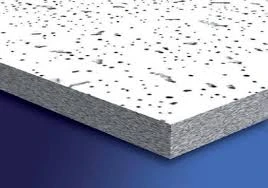Nov . 08, 2024 06:46 Back to list
Innovative Ceiling Design Solutions for Modern Interior Spaces
Exploring the Aesthetic and Functional Benefits of Ceiling Tees
Ceiling tees, a term commonly associated with the construction and design of suspended ceilings, are pivotal components that not only serve structural purposes but also enhance the aesthetic appeal of various spaces. Understanding the function and versatility of ceiling tees can help homeowners, architects, and interior designers make informed decisions about ceiling designs.
What are Ceiling Tees?
Ceiling tees are primarily structural metal or plastic components that form part of a suspended ceiling grid system. They are typically configured in a T-shape and are used to connect ceiling tiles or panels, thereby creating a framework that supports the entire ceiling system. This allows for the easy installation and replacement of tiles, as well as access to the space above the ceiling for maintenance of electrical and plumbing systems.
Advantages of Ceiling Tees
One of the key advantages of ceiling tees is their ability to support a wide variety of ceiling materials, from lightweight acoustic tiles to heavier plasterboards. This versatility allows for creativity in interior design, as different materials can be used to achieve the desired aesthetic and functional outcomes. Acoustic ceiling tiles, for example, can be used in office environments to absorb sound, creating a quieter and more productive atmosphere.
Another significant benefit of ceiling tees is their contribution to energy efficiency. A suspended ceiling system can provide thermal insulation, helping to maintain comfortable temperatures within a building. By reducing heating and cooling costs, ceiling tees play a role in sustainable design, appealing to environmentally conscious builders and homeowners.
Aesthetic Considerations
ceiling tees

Ceiling tees are not just about functionality; they also play a critical role in the aesthetics of a space. The grid pattern created by the tees can be incorporated into the overall design theme of a room. Different colors and finishes are available, allowing for a myriad of design possibilities. For instance, black ceiling tees can provide a sleek, modern contrast against lighter ceiling tiles, while white tees can create a seamless, uniform look.
Moreover, the design of the ceiling itself can dramatically alter the ambiance of a room. Creative use of lighting fixtures that integrate with the ceiling tees can transform a simple suspended ceiling into a stunning focal point. Cove lighting or recessed lights can add depth and warmth, enhancing the overall design of the space.
Installation and Maintenance
Installing ceiling tees generally requires basic construction skills, but it is advisable to consult with or hire professionals for larger or more complex projects. The installation process involves measuring the space, marking out the grid layout, and securely fastening the tees to the structural ceiling. Once the tees are in place, ceiling tiles can easily be fitted into the grid, allowing for a clean, polished finish.
In terms of maintenance, suspended ceilings are advantageous as they allow for quick access to hidden infrastructures. If a tile becomes damaged or stained, it can be replaced without the need for full ceiling renovations. Regular cleaning and occasional re-painting of the tees can also help maintain their appearance and functionality over time.
Conclusion
Ceiling tees are essential elements in the design and execution of suspended ceilings. They combine practicality and aesthetics, allowing for versatile and energy-efficient designs that can meet a variety of needs in residential and commercial spaces. By considering the color, material, and overall architectural vision, ceiling tees can enhance the beauty and functionality of a room, proving that ceilings can be as dynamic and engaging as the floors beneath them. Whether you are renovating a home, designing a new office, or upgrading a public space, ceiling tees offer a plethora of benefits that make them a valuable consideration in any interior design project.
-
Quality Ceiling Trap Doors & Access Panels | Easy & Secure AccessNewsAug.30,2025
-
Durable Ceiling T Grid Systems | Easy InstallationNewsAug.29,2025
-
PVC Gypsum Ceiling: Durable, Laminated Tiles for Modern SpacesNewsAug.28,2025
-
Pvc Gypsum Ceiling Is DurableNewsAug.21,2025
-
Mineral Fiber Board Is DurableNewsAug.21,2025
-
Ceiling Tile Clip Reusable DesignNewsAug.21,2025







